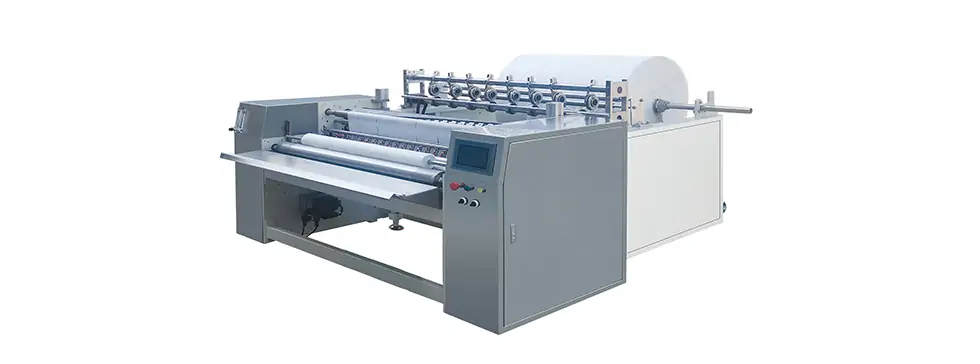The canister wet wipe machine with rewinding and slitting capabilities typically handles the cutting and folding process through a series of automated steps. Here’s how it generally works:
-
Material Feeding: The machine begins by feeding a large roll of wet wipe material into the system. This roll contains the wet wipe substrate, which may be a nonwoven fabric, spunlace, or other suitable material.
-
Unwinding and Tension Control: The roll of wet wipe material is unwound as it passes through the machine. Tension control mechanisms ensure that the material is fed smoothly and evenly, preventing wrinkles or creases that could affect the quality of the finished product.
-
Cutting: Once the wet wipe material is unwound to the desired length, cutting mechanisms precisely cut the material into individual wipes. This can be achieved using rotary knives, blades, or other cutting devices configured to the required dimensions.
-
Folding: After cutting, the individual wet wipes are folded into the desired configuration. This can include single-fold, quarter-fold, or other folding patterns depending on the specifications of the final product. Folding mechanisms may use vacuum suction, air jets, or mechanical arms to fold the wipes accurately and consistently.
-
Stacking or Winding: The folded wet wipes are then either stacked neatly on top of each other or wound onto a spool or core, depending on the packaging requirements. Stacking may involve conveyor belts or stacking trays, while winding utilizes winding shafts or mandrels to roll up the wipes.
-
Rewinding and Slitting: In the case of canister wet wipe machines with rewinding and slitting capabilities, the machine may further process the wound rolls of wet wipes. canister wet wipe machine rewinding slitting It can rewind the large rolls into smaller rolls suitable for insertion into canisters or containers. Additionally, slitting mechanisms may cut the wide rolls into narrower widths to accommodate different canister sizes or packaging configurations.
-
Packaging: The rolls of wet wipes are then packaged into canisters or containers for retail sale or distribution. This may involve inserting the rolls into pre-formed canisters, sealing the canisters with lids or seals, and labeling them with product information and branding.
Overall, the canister wet wipe machine with rewinding and slitting capabilities automates the cutting and folding process to produce neatly folded wet wipes ready for packaging. The integration of rewinding and slitting functions further enhances the machine’s versatility, allowing it to accommodate various packaging formats and configurations.

